
Not everyone can afford a high-end video card. Especially with mid- to high-end cards becoming rarer and rarer due to the booming mining scene. Some people, however, just wants to play their game in an acceptable frame rate regardless of the graphics settings. In this review, we’ll be taking at ASUS’ take on AMD’s most entry-level card, the ASUS RX 550 2GB.
ASUS Radeon RX 550 2GB

| ASUS Radeon RX 550 2GB | |
| Architecture | Polaris 10 |
| Manufacturing Process | 14nm |
| Stream Processors | 512 |
| Texture Units | 32 |
| Raster Operations | 16 |
| Clock Speed | 1183MHz |
| Memory Clock | 7Gbps |
| Memory Bus Width | 128-bit |
| VRAM | 2GB GDDR5 |
| Transistor Count | 2.2 Billion |
| Display Outputs | 1x DVI-D, 1x HDMI 2.0, 1x DisplayPort |
Polaris Refresh
Before we get into the review, here’s what’s new about AMD’s RX 500 series.
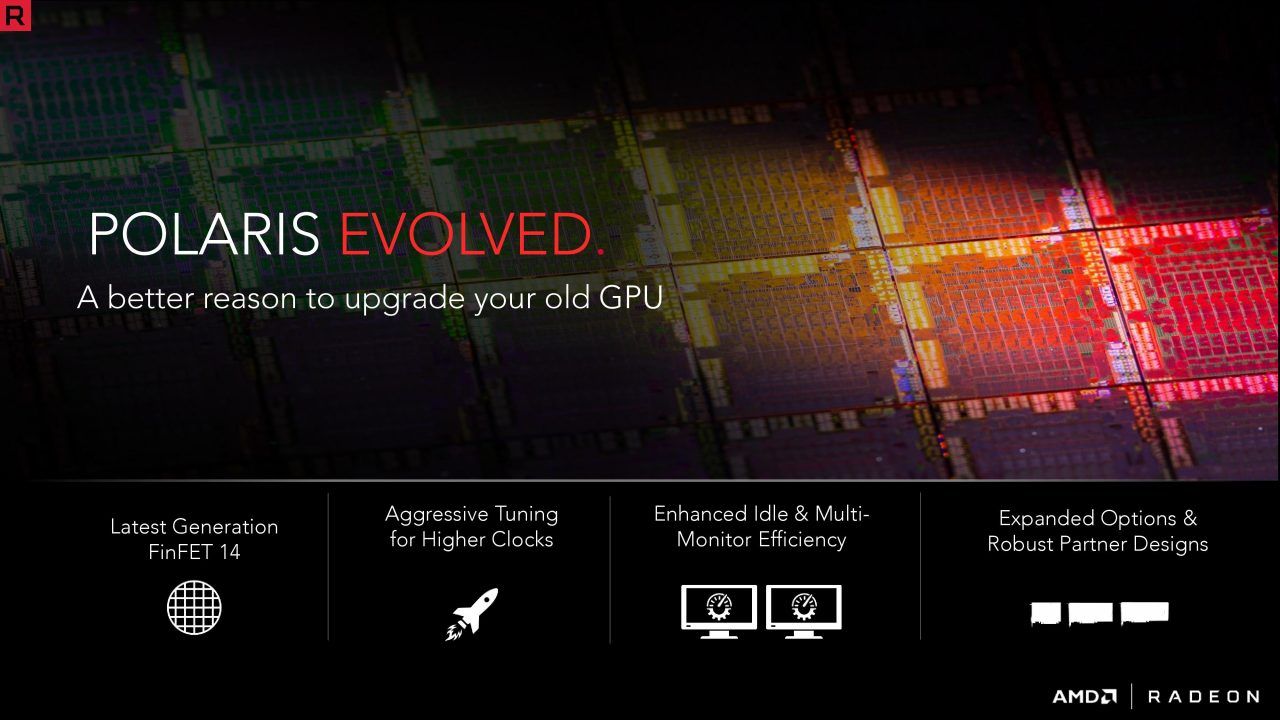
Courtesy of AMD.
Using their Polaris architecture from their RX 400 cards, the RX 500 GPUs uses a refreshed version of the Polaris. It offers higher clocks and memory speeds. The trade-off, however, is its higher TDP. Thus, leading to higher power consumption.
The Polaris refresh GPU uses AMD’s latest generation FinFET 14nm process, which is a fancy term for saying that the manufacturing process has matured enough that the chips that roll off the factory can now be pushed higher for better performance. Aside from the better clocks speeds, AMD is using a new memory state to improve performance and efficiency of the memory.
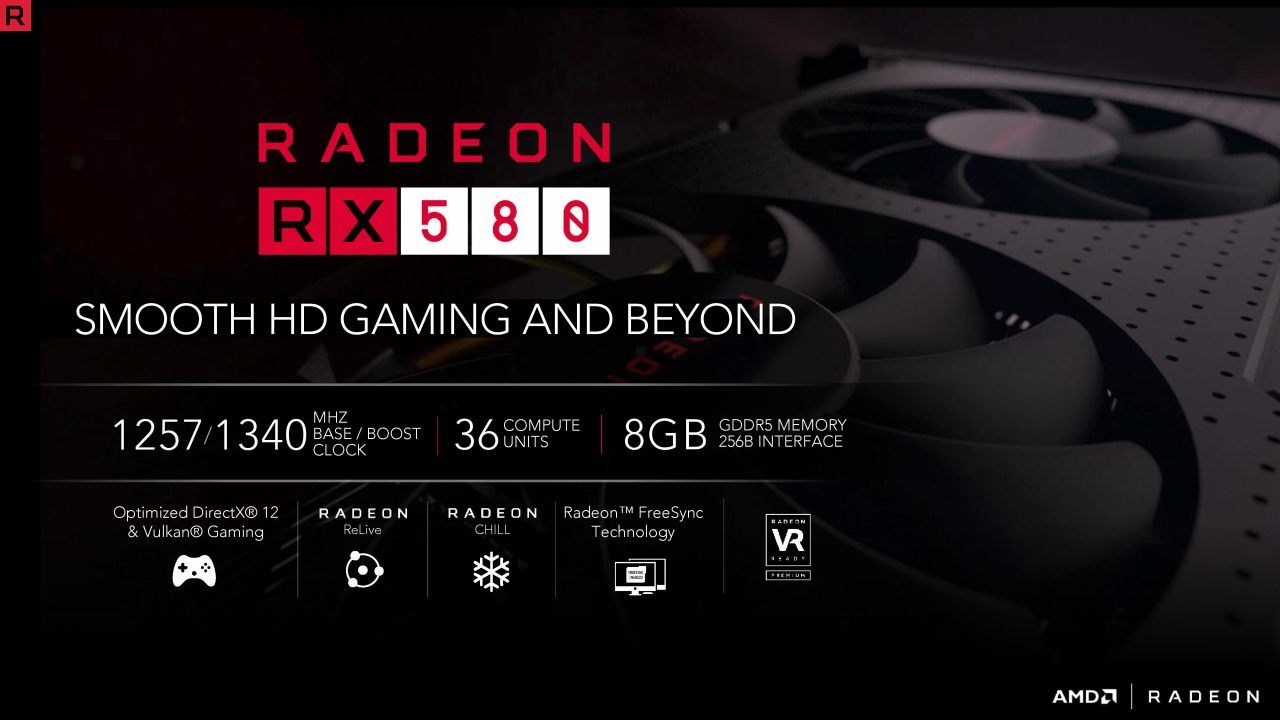
Courtesy of AMD.
The RX 500 series also takes advantage of AMD’s Radeon Chill, which was included with the Radeon Crimson Relive software. Radeon Chill saves power whenever it can during use. It dynamically regulates framerate based on your movements while in-game. Basically, it lowers the GPU capability if you’re in a safe and calm area but when the action starts and you need the extra frames, Radeon Chill will fully unleash the potential of your card.
Support for AMD’s FreeSync technology is supported by the RX 500 series. For those who are unfamiliar, it works just like NVIDIA’s GSync where tearing is avoided by syncing the refresh rate of the monitor to the number of frames put out by the GPU. As its name suggests, FreeSync is free to all manufacturers to implement in their displays. Currently, the only downside of FreeSync is its limited range of around 40fps to 90fps.
Up close with the ASUS Radeon RX 550 2GB
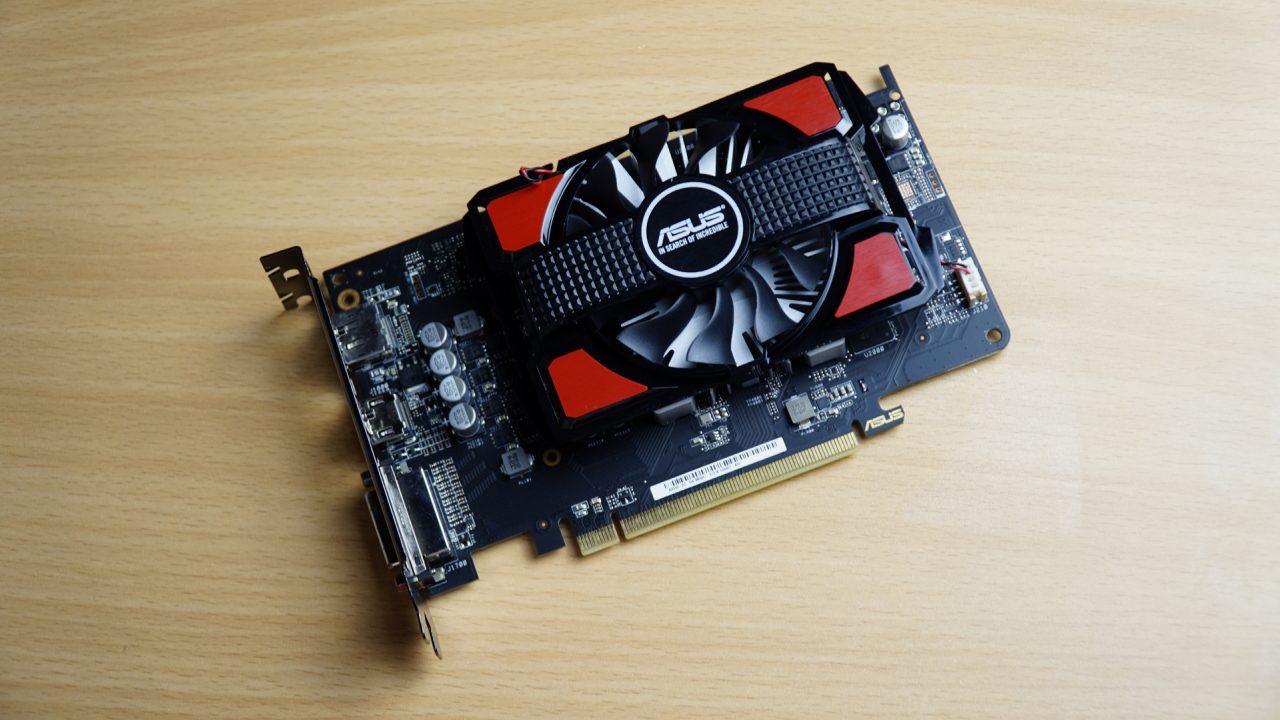
The ASUS Radeon RX 550 2GB is the barest video cards we’ve seen for a while. Even more so compared to the Power Color RX 550 Red Dragon 2GB. The card only has a single fan rated at IP5X. The dust may have difficulty entering through the fans, but as you can see, it’ll probably fall somewhere else in the PCB.

Due to the 50W TDP of the RX 550, the single fan setup won’t have any problems in cooling the card. In terms of design, ASUS has stuck to their traditional red and black design. The card doesn’t have any kind of unnecessary design features such as RGB lighting to keep its price down.

The ASUS Radeon RX 550 2GB houses a single Dual-Link DVI port, a DisplayPort 1.4, and a single HDMI port. A basic selection of ports sure, but it’ll handle almost every display you’ll throw at it (except a display with a VGA port. You’re going to need an adapter for that).
Measuring at 7.2 x 4.4 x 1.7-inches, the ASUS Radeon RX 550 2GB won’t have any problems fitting in your system. Even a small form factor setup won’t have any problems fitting this card.
System and Benchmarks
The ASUS Radeon RX 550 2GB was placed on our Ryzen-based test bench to see how it would perform in our suite of games:
All benchmarks were run at 1920 x 1080.
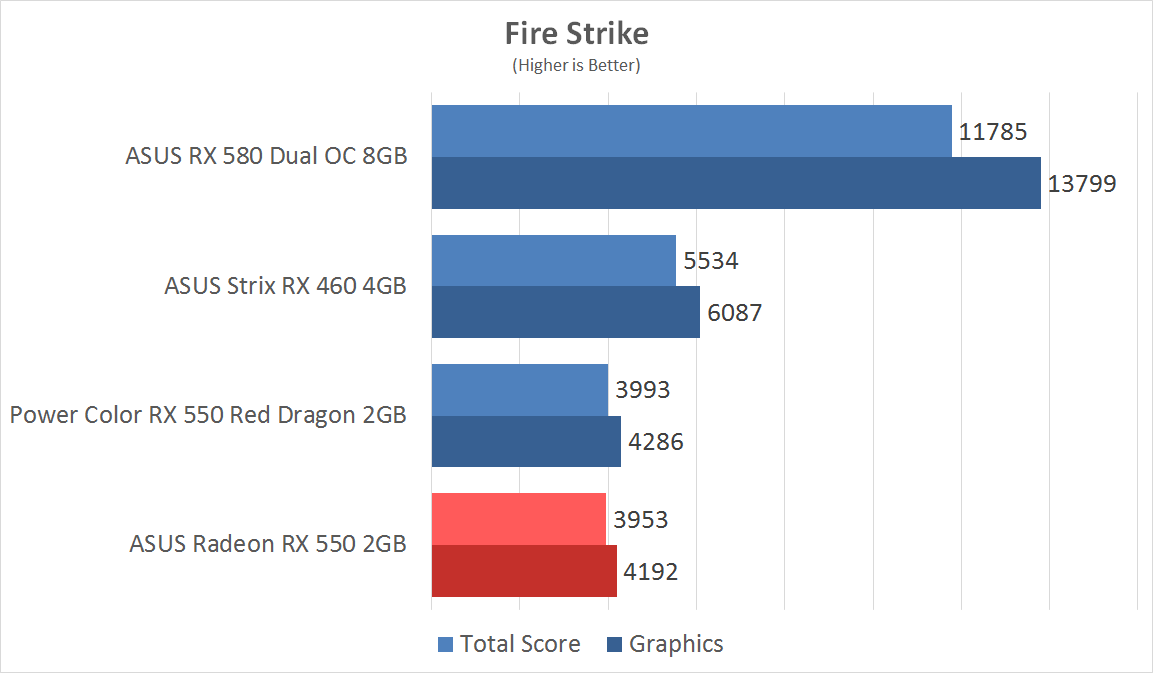

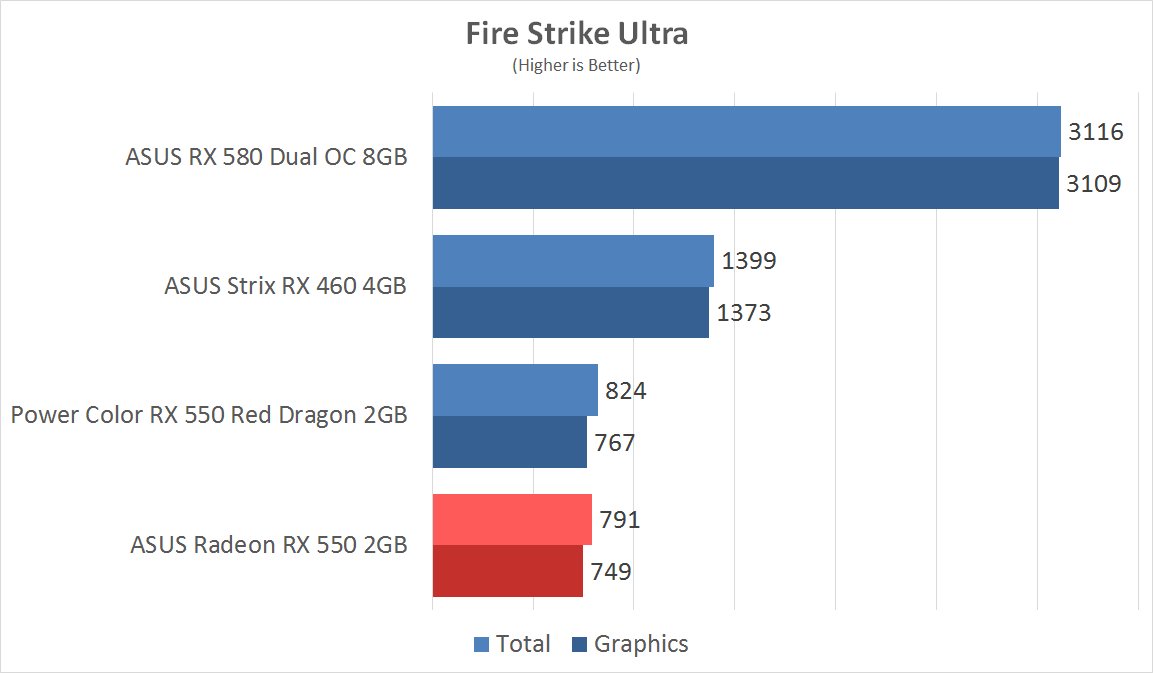
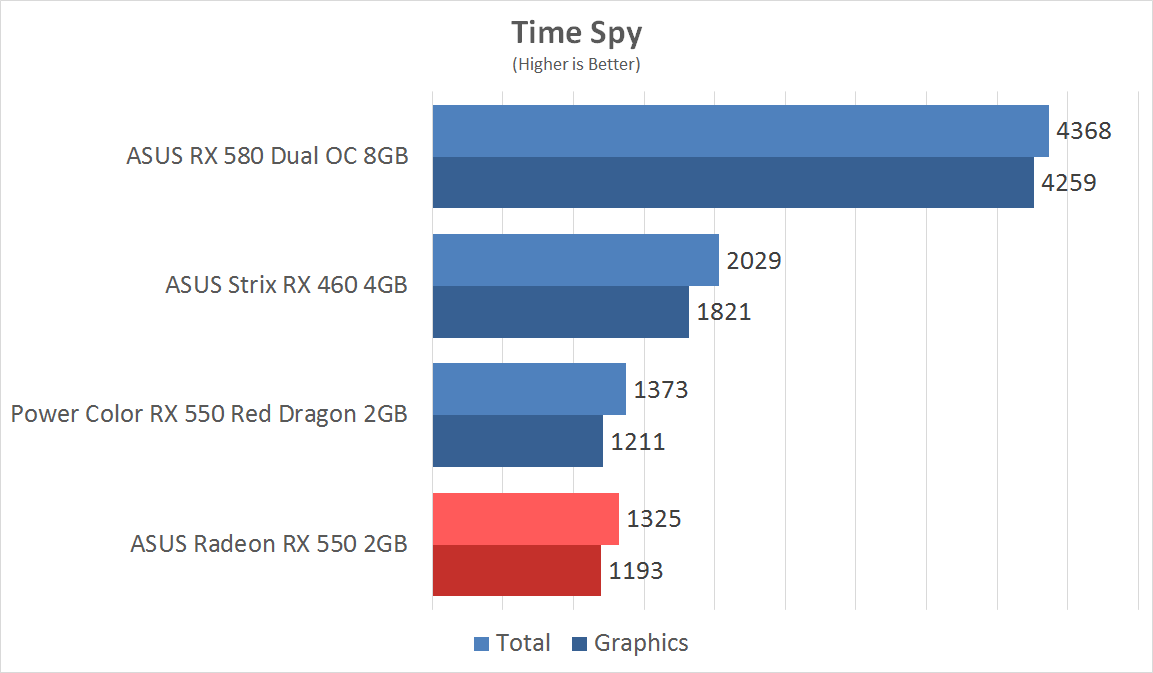




Much like with our review of the PowerColor RX 550 Red Dragon 2GB, we weren’t able to set the graphics settings compared to our usual run due to its memory restrictions. We were only able to set the game at: Texture Quality: Low, Shadow Maps: Medium, Shadow Resolution: Medium.

As expected, the ASUS Radeon RX 550 2GB places last on our benchmarks. This is a given that most of our games consists of triple AAA games and are set to their highest maximum details to maintain consistency. You can get better frame rates if you turn down some settings. You’ll also get better frame rates on multiplayer exclusive games such as DotA 2, Counterstrike: Global Offensive, and League of Legends as they aren’t as graphically demanding compared to the games in our benchmark suite.
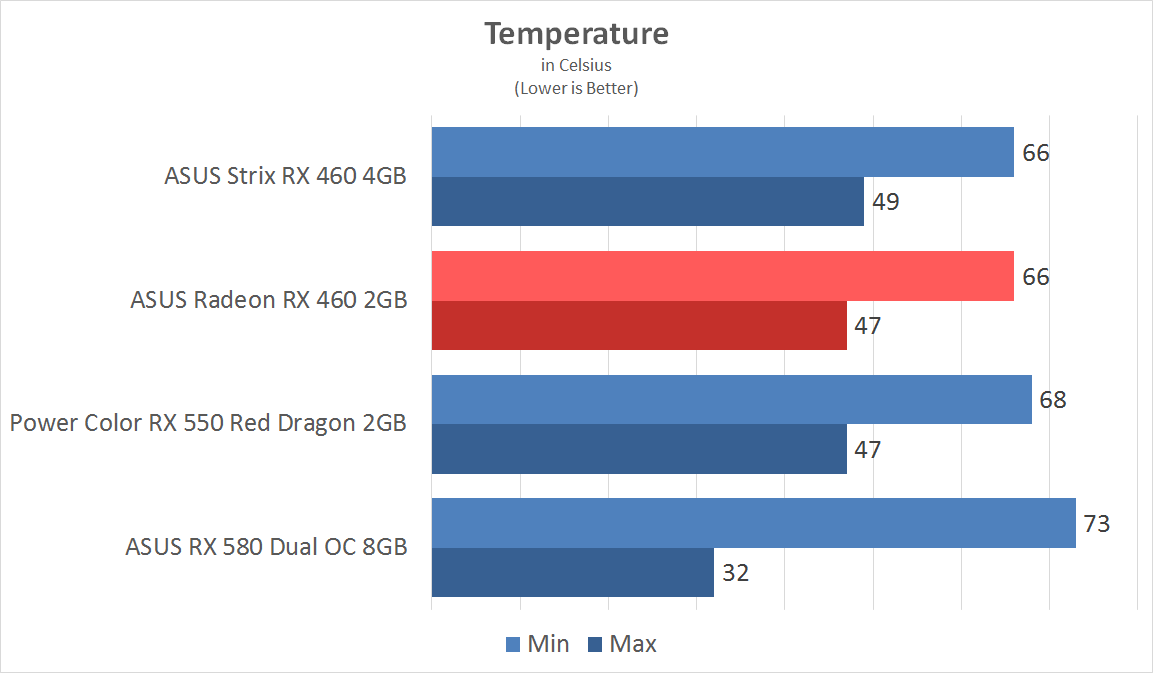
Due to the open nature of the ASUS Radeon RX 550 2GB and its low TDP, you won’t have any problems with temperature. Despite its single fan setup, the card was sitting comfortable at 66°C under load, which shouldn’t pose any problems in the long run.
Conclusion
The ASUS Radeon RX 550 2GB isn’t the best card out in the market right now. Priced at USD 109.99 or PhP 5,500, you can probably find other alternatives that’s cheaper than the ASUS Radeon RX 550 2GB.

If you are really into games, we’d suggest holding off for a couple of paydays before getting a card. Even the RX 460 is a relatively significant upgrade compared to the RX 550. With a little bit of patience, you can get an AMD RX 470/570 or GTX 1050/1050 Ti that’s going to give you better performance for just a little bit more. If you, however, just want to run your games old games, multiplayer games, or 16-bit indie games, then the RX 550 will just do fine.
